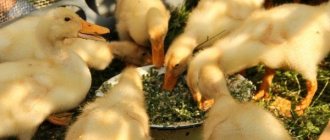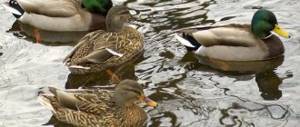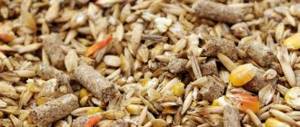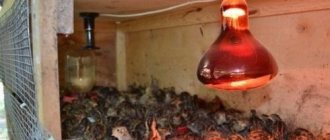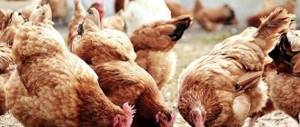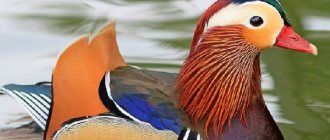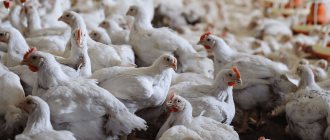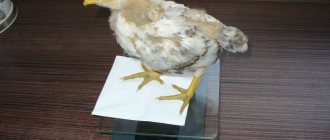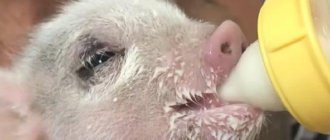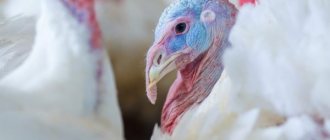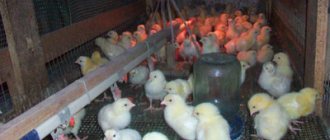Seasonality of feed
Depending on what time of year it is, feeding should undergo certain changes so that the bird can get everything it needs for a prosperous life and good productivity.
With the onset of winter, quail will need additional sources of vitamin and mineral supplements, which they received from green mass in the summer. During the cold season, excellent substitutes are made from:
- sprouted oats and wheat;
- millet;
- green onion feathers;
- dried herbs.
In the summer months, you can give not only grass, but also lettuce, beet tops, cabbage - they help better digestion and also serve to absorb nutrients. It is recommended to give quails green mass in chopped form, adding it to various mash.
Seasonal feeding of quails
It is important that quails do not overeat; at different times of the year they require a separate diet. There should be some salt in the feed mixture.
In summer
In summer they provide more greens. The diet includes cabbage, spinach, green parts of beets and fresh legumes, wheat, and chalk. These products improve digestion and supply the bird with the necessary nutrients. It’s good if you have the opportunity to feed quails with earthworms.
Be sure to read:
Pharaoh quail: description of the breed, characteristics of productivity, difference between male and female
in winter
In winter, in addition to compound feed, poultry are given sprouted grain. Be sure to use corn - this is an energy feed.
In the summer, legumes and vitamin-rich herbs (alfalfa and nettle) are harvested and mixed with the feed mixture in the winter.
Compound feed
So, there are many types of feed. Let's give a few examples.
PK-5 (corn, sunflower or soybean cake, wheat, fish meal, etc.) - suitable for feeding parent stock;
Compound feed PK-5
- PC-1 and PC-2. The composition is similar to PK-5, only cheaper due to the addition of barley or wheat bran and chalk. Consequently, an adult bird is fed;
- PC-2,2, PC-4, PC-6. These feeds are suitable for fattening quails. Although the best result is obtained by a mixture of broiler feed for chickens (80%) and peas (20%);
Protein-rich feed is stored in accordance with the instructions.
What not to feed quails
It is strictly not recommended to give quails:
- various waste from your table that is not listed as useful (sausage trimmings, sour yoghurts, etc.);
- potato and tomato tops;
- parsley, celery, sorrel;
- buckwheat and rye;
- water in which potatoes were boiled (for birds this is poison);
- Ranunculaceae.
Feeding by age
At the initial stage of their life, quails eat from 3 to 5 g of feed per day. From the first to the seventh day they give food from finely chopped boiled eggs, which are ground with the shell. The next day, low-fat, pureed cottage cheese is included in the diet. You can add fish. In the following days, you can supplement the menu with greens, and gradually increase the portion of cottage cheese and eggs. Nettle pre-scalded with boiling water is perfect as a green herb. Yeast feed – crushed bread – is also recommended.
To compensate for the deficiency of minerals, a bowl with ground shells, chalk, and shells is placed in the cage with the quails. The feeding regimen becomes five times a day. The intensive growth of young animals requires regular feeding, without interruptions. 2 hours after eating, the container with the remaining food should be removed. Starting from two weeks of age, chicks should be fed 4 times a day with feed containing 25% crude protein. The calorie content should be less than 280 kcal. The basis of food is corn, wheat. Necessary supplements - protein, vitamins, minerals. This diet continues until the chicks are 4 weeks old. Experienced quail breeders recommend turkey feed.
In order to compensate for the deficiency of minerals, a bowl with ground shells, chalk and shells is placed in the cage with the quails.
Starting from the fifth week of life, quails can be fed an adult diet. Feed mixtures are used, the protein dose is reduced to 15%. This is done to avoid puberty occurring too quickly, which will degrade the quality of the product.
You can use a ready-made feeding recipe:
- grain mixture (60 g): millet, barley, finely ground wheat, oatmeal;
- sources of protein (36 g): fish flour, skim milk, cottage cheese;
- sources of minerals (4 g): shell, chalk.
The number of meals for laying hens is 3-4 times a day. It is recommended to feed at the same time of day, so that the intervals between feedings are equal.
Important. The main portion of food should be given at night so that laying hens do not feel hungry until the morning
They are well saturated with grain mixtures - this is the key to high egg production.
The daily portion of food for a laying hen is 25–30 g. It is necessary to ensure that the drinking bowls are full; water must be present. Twice a day it is replaced with fresh one; sometimes it is recommended to dilute it with potassium permanganate to a light pink solution. You can put a container with sand in the cage, as birds love to bathe.
When the resistance of defenses to various infections decreases and metabolism slows down, veterinarians prescribe the combination drug Tetravit.
You can read about Gammatonic, a drug for increasing immunity and strengthening the body, here https://ferma-nasele.ru/gammatonik-instrukciya-po-primeneniyu-dlya-ptic.html.
Feeding quails at different periods of their growth
- From the first to the seventh day the most important period in a quail's life. This is the time when the formation of all organs of the chicken occurs. Therefore, it is important that all the ingredients of the diet are selected correctly and in the required proportions. In the 1st period, quails need to be fed 5 times a day. The main product at this time should be hard-boiled eggs and crushed together with the shell. You can take chicken or quail. Already from the second day, according to recipes tested by many poultry farmers, it is recommended to add cottage cheese. Namely, two grams per head per day. From the third day, the egg-curd recipe should be supplemented with juicy chopped greens. From the 4th day after hatching, it is recommended to reduce eggs in the diet, but increase the proportion of cottage cheese.
- This period begins on the fourteenth day and lasts 4 weeks. At this time, young animals need to be fed 4 times a day with special feed. Which contains about 25% crude protein per 100 grams, or according to the recipe that will be presented later in the article. The required calorie content of the feed is 280 calories.
- This period is from the fifth to sixth week after the quail is born. At this time, grown chicks can be switched to food prepared according to a recipe for adult birds. In this case, you need to pay attention to the fact that the crude protein content should be reduced to 16%.
Diet for quails in the table:
Quail feeding diet
What to feed laying hens to increase egg production
You can ensure high egg production of quails by properly selecting the daily diet of laying hens. An important role here is played not only by the type of feed and its composition, but also by observing a certain feeding regime for the birds.
Quail - laying hen
A quail's egg production will always be at the highest possible level if its diet is enriched with proteins and amino acids that are naturally present in fish and meat and bone meal. The addition of ground shells, gravel and special edible chalk helps to harden and strengthen the eggshell.
Quail eggs
Tips to follow to increase egg production:
Every day the bird should eat three times at such an interval that it has time to develop a good appetite before the next feeding. Remains of food after each meal must be removed from the feeder - this way you can achieve compliance with the optimal regime and not deviate from it. Each laying hen should consume at least 30 grams of feed. The volume of food should be appropriate for the age of the hen; overfeeding is unacceptable, as this will lead to obesity, which negatively affects the quantity and quality of eggs produced. The diet of laying hens should contain at least 25% of proteins, which are most responsible for egg production and the quality of laid eggs. Therefore, it is necessary to add bread or cottage cheese to the food - at the rate of 2 grams for each individual. Under no circumstances should you switch too abruptly from one nutritional composition to another.
If such a need arises, this must be done very smoothly and gradually, mixing the previous and new feed compositions in equal proportions. An important condition is the freshness of the food, regardless of its type.
Increasing egg production in quails
The addition of fresh and high-quality vegetable oils of cotton, soybean, corn, sunflower and rapeseed has a beneficial effect on the egg production of quails - these fat additives are rich in unsaturated fatty acids, phospholipids and unsaponified lipids - substances indispensable for the development of quails, which not only improve the egg production of young animals, but also accelerate the process of its ripening.
Adding vegetable oils to the diet will have a qualitative effect on the egg production of quails
Feed and their effect on egg production
Especially for laying hens, it is recommended to prepare homemade food with the addition of a vitamin-mineral premix of ten percent concentration in the amount of 80 grams. The remaining ingredients you need to take are:
- corn - 200 gr;
- wheat - 200 gr;
- well-fried sunflower cake - 90 g;
- soybean meal - 90 g;
- feed yeast - 45 g;
- meat and bone meal - 45 g;
- peas - 30 g;
- unrefined sunflower oil - 10 g.
Quail and feed
Egg production will also be significantly increased by food prepared according to the following recipe. You need to mix together:
- corn - 200 g;
- wheat - 190 g;
- millet - 150 g;
- fish and meat and bone meal - 120 g of each type;
- dry yeast - 60 g;
- sunflower cake - 50 g;
- powdered milk - 40 g;
- ground shell - 20 g.
In order for birds to always lay eggs well, they must always have grain crops in their diet. Large grains must be soaked for 24 hours and then passed through a meat grinder.
Sprouted grains bring great benefits
High-quality industrially produced feed can also be used for these purposes. It is recommended to treat laying hens with such mixed feeds as “Salvit” and “Feedlife”, the composition of which is rich in valuable antioxidants and antibacterial additives.
Compound feed
Nutritional features by age
What food is suitable for quails? Many people believe that feed intended for laying hens is enough for them. But such food does not contain enough protein. Therefore, you should buy food specifically for quails, moreover, at each age period they need special food:
- In the first 7 days of life, the chicks are given boiled quail eggs. On the second day, add a small amount of cottage cheese (about 2 grams per bird). Every day the amount of cottage cheese is increased by 1 gram and the amount of boiled eggs is reduced. On day 5, greens should be introduced into the diet. Young animals scatter food, so it is not recommended to fill the tops to the top.
- The second period covers 2-4 weeks of bird life. They should be fed 4 times a day, and the food should contain at least 25% protein.
- The adult period of life, which begins at 5 weeks and continues until the death of the bird. In order for quails to have good productivity, they need to be fed properly. The amount of protein is reduced to 15%. It is advisable to prepare special mixtures for birds from 60% grains (corn, wheat, oats, barley), 35% proteins (cottage cheese, fish or meat and bone meal) and 4% mineral additives (chalk and eggshells). Once a week, quail need a portion of gravel, which is good for the stomach.
Table 3. Feed ration for quail depending on age
| Age of birds | Diet |
| 1-7 days | Boiled eggs, cottage cheese, greens. |
| 2-4 weeks | Protein foods: cottage cheese, fish meal. |
| 5 weeks until death | Grains: corn, wheat, oats, barley. Protein: cottage cheese, fish and meat and bone meal. Food additives: chalk and eggshells. |
Industrial feed
Complete food is considered to be food that contains all the required substances in certain proportions: proteins, fats, carbohydrates, vitamins, minerals.
Typically, commercial feed contains all the required substances in the required proportions.
The main list of required ingredients is represented by the following products:
- corn is a source of energy;
- oats, sifted and cleared of films, are a storehouse of microelements and vitamins;
- crushed wheat (Artek) is needed to increase the productivity of birds;
- legumes are sources of amino acids, vegetable proteins, fats;
- meat and bone meal, fish meal - suppliers of proteins;
- cottage cheese is a source of protein;
- minerals (shells, shells, gravel, chalk).
Industrial compound feed is considered the most convenient for feeding quails.
There are several brands of commercial feed:
- PC-1, PC-2 contain wheat, salt, chalk, corn. Protein sources include bone meal, fish meal, and soybean meal. PC-1 is supplemented with wheat bran and barley. These are inexpensive, simple feeds. Consumption is 27 grams per day per adult bird.
- PC 2.2, PC-4, PC-6 consist of 60% grains - equal proportions of wheat, corn, barley. 30% of the feed consists of meal, lysine, feed yeast, fish meal. Salt, chalk and phosphate make up about 5% of the mass. Additionally, bran, seashells, and wheat flour may be present. This food is intended for adult birds.
Spoiled feed can cause the death of birds, so it must be stored according to the instructions.
PC-5 contains the following components: corn, wheat, fish meal, sunflower or soybean meal, lysine. Sources of minerals are salt, chalk, and phosphate. Most of the mass is grain (60%), protein contains about 35%, the rest is minerals. The daily portion of food per individual is 30 grams.
The food must be stored according to the instructions, as a spoiled product can cause the death of birds. But many people prefer to make their own feed, since commercially produced food does not contain enough protein.
The quail will be fed from the second week. What to feed quails at home
Already from the second week, young animals can be given ready-made feed little by little. For quails two weeks old, you can feed turkey feed. The feed should be based on corn or wheat. In addition to this, the diet for quails should contain a lot of:
- squirrel;
- vitamin;
- minerals.
At this time, a bowl with fine gravel should be placed in the cage in which the growing quails are kept. Quails of this age are already fed four times a day.
When the young birds reach thirty days of age, they need to be gradually transferred to feed for adult birds. The amount of proteins at this time should be reduced. Because its excess can initiate early puberty. Subsequently, this may lead to a decrease in product quality.
Grown up chicks
Specifically, month-old quails are fed 3 times a day.
Already 3-week-old quails can be placed in a cage with sand for bathing.
Do not forget about the water that is poured into special trough drinkers. Make sure the water is fresh at all times. To do this, replace it at least twice a day. From time to time, to prevent infections, give manganese solution.
How much feed does a quail consume: norms
It is important to start feeding quails correctly
The approximate feed consumption per day per quail depends on its age and productivity. Young animals up to 4 weeks old are fed from 4 to 12 g of grain feed (fresh grass is not included in this norm). From a month on, the birds are divided into groups: meat fattening and rearing until eggs are produced. For fattening quails, the high nutritional value of the feed is maintained and the daily dose is calculated at 16 - 20 g, followed by an increase to 30 g. For future laying hens, the food is enriched with vitamins and the food volume is maintained at 16 - 17 g per individual. At the height of egg laying, laying hens are fed 22 - 28 g of feed.
Important! For young animals and quails, food should always be in the feeder
Daily ration
How much feed per day is required to keep quails of different ages, what does the feed consumption calculator look like? Feed consumption depends on the age and breed of quail, for example, an adult white quail of the English breed consumes 35-40 grams of feed per day. On average, to keep one adult bird for 1 month you will need 1 kilogram of feed.
From the first day to 5 weeks, young animals especially need balanced feed. After all, chickens move a lot, grow quickly and constantly develop. Compound feed for young animals at this age should consist of 50% wheat, 10% corn, 15% soybean meal, 10% fishmeal, 1% fish oil. In addition, calcium, salt, and premix are added to them. The premix contains all the vitamins and minerals necessary for chickens.
From 5 to 6 months, quails are fed with mixed feed, which consists of 35% wheat, 35% corn, 10% sunflower meal, 7% wheat bran, 5% fish meal, 2% sunflower oil, 1% fish oil, soda, salt, monocalcium , methionine, lysine. It also contains a premix, Natufos and Natuzim.
Food for quail from 7 weeks of age consists of 35% wheat, 10% corn, 20% high protein feed product, 10% bran, 10% sunflower meal, 5% fish meal, 1% fish oil, 5% fish meal, crushed shells , soda, Bacell enzyme, salt, lysine, premix.
What you need to know about quail feed
Quail breeding is a developed branch of poultry farming. Farmers choose small birds for their early maturity and quick return on investment. For example, in 365 days you can get so many eggs from one female that their weight is 20 times the weight of the quail itself. The products are dietary and appreciated by all egg lovers. It contains microelements, vitamins, essential amino acids. To obtain high-quality products, you need to provide birds with special feed.
Young animals, as mentioned above, are characterized by precocity, and therefore their food must meet the following parameters:
recommended articles:
- high calorie content;
- balance;
- crushed into small granules for ease of digestion.
A good quail feed contains about 35% corn, which is responsible for the high-calorie content of food. And if carbohydrates are obtained from this quail grain, then which component will be responsible for protein? This problem can be solved by adding meat and bone meal up to 10%.
painted quail
Each farmer calculates the amount of feed for his livestock, thereby providing the poultry with the necessary components
It is also important to consider the size of the fractions. Quails are small in size, which means that coarse grinding will not suit them; it will be difficult to digest
With the right choice of food, you can do without additional ingredients. The composition of the feed is distinguished as follows:
- for young animals from 1 to 40 days;
- raised poultry over 40 days of age;
- meat direction of quails.
It is important to know. With the onset of the egg-laying period, birds begin to consume food in much larger quantities than during the resting period
One female receives up to 40 grams of feed, and producers receive half as much.
What does compound feed for quail consist of?
It is worth noting that purchasing high-quality feed will be very expensive for the poultry owner. In this case, you can use a simple way to save money and prepare feed with your own hands.
Here it is important to know that some feed components will be important for egg-bearing breeds, and others for meat breeds.
A pair of Californian quails
An important factor is the time of year. During the winter months, birds are fed slightly differently than in summer.
Attention is also paid to the age category of the herd. Young animals that have just hatched from eggs will not be able to eat feed intended for adult quails
What do chicks need?
In the first week, the young animals are given boiled eggs, which are either finely chopped or rubbed through a fine grater. On the eighth day, you can start complementary feeding with a low-fat variety of cottage cheese. One quail should not consume more than 2 g of curd products per day.
The next ingredient included in the food is green matter. It is finely chopped and mixed with the main food. In the winter season, it is also recommended to provide young animals with grass; it can be grown in greenhouse conditions if the livestock is quite large.
From the 11th day, grated eggs begin to be gradually removed and the curd component increases. From the second week of life, young animals are transferred to compound feed for adult livestock.
What can be included in mixed feed when making it yourself?
As a rule, feed contains several ingredients; they can be used in various combinations, but a grain base is required; it is this that acts as the main component. Most often, farmers prefer to produce grains of oats, millet and wheat; of course, you can choose several crops at once.
But not only grains are important, but also vegetables and fruits, which are sources of vitamins. You can add a certain amount of peelings from carrots or apples, the main thing is that they are not spoiled, otherwise problems with the quail’s digestive system will begin
Before adding root vegetables and fruits, they need to be boiled. Before this, the rotten part is removed and thoroughly cleaned of soil and dirt. Then what goes into feed is cut into equal parts and placed in a container with water for subsequent half-hour cooking. After cooking, the entire mass must be cooled and then mixed into a homogeneous consistency. This mixture can be used either in homemade feed or as an excellent additive for store-bought food.
Types of feed
You will need to buy food for quails or make it yourself, depending on the age of the bird. For example, if you buy, feed can be divided into a couple of types:
- For young animals. Compound feed called PK-1 is used. It is based on corn, wheat, and other grains. Also included are bran, bone meal and minerals. All components are very important for young birds, which with such nutrition will be able to quickly develop and grow;
- For an adult. Compound feeds of this type are marked PK-2. It is based on the same cereals, but contains more protein and minerals.
There is also one food for young animals labeled PK-5, it is slightly more expensive than that described above, but its composition is much better for quails.
Feeding chickens
Boiled eggs and cottage cheese replace bugs and worms in the diet of small quails. Quail or chicken eggs are hard-boiled and crushed without removing the shell. The food is scattered over the feeders, the nimble minke whales quickly understand where the food is and find the food source themselves. To prevent the wet egg from turning into a sticky single mass, it is lightly sprinkled with fine corn grits.
Cottage cheese - food for chickens
From day 2, the chicks are given cottage cheese. It is better if it is dried and separated from the whey as much as possible.
Important! Eggs and cottage cheese, being in a brooder at high temperatures (at least 30°C), quickly deteriorate. To avoid stomach upset in babies, food is given in small portions 3 to 5 times a day.
Before each feeding, the feeders should be washed to remove any remaining old food.
It is much easier to use ready-made feed for quails. Starter food is suitable for babies from the first day of life. The proportion of protein in it should be at least 26 - 28%. It is enough to pour dry feed granules into feeders once a day, which is very convenient if you are raising a large number of livestock.
In the absence of feed, the quail are fed a mixture of corn and wheat grits in a ratio of 3:1. Be sure to add cottage cheese or boiled meat, 2 - 4 g per individual. A premix is added to the grain mixture according to the instructions or a complex of vitamins is added to drinking water.
Is it possible to give small quails grass?
From the 3rd day of life, chicks should be offered finely chopped greens. Plants chosen are juicy and nutritious: quinoa, wood lice, clover, alfalfa, dandelion. From the 7th day, green onions are added to the menu, which is a good antiseptic and strengthens the bird’s immunity.
Alfalfa for quail
In winter, the birds are given grass meal. It can be purchased at feed stores (it is often sold in granules) or you can prepare it yourself. To do this, dried grass is crushed to dust and mixed with food.
Quail 3-4 weeks
By the 3rd week, the young animals begin to change from down to feathers. You can identify a hen and a cockerel by the color of its plumage. The young animals are removed from the brooder into cages for further maintenance. Individuals begin puberty. The livestock is separated by sex to avoid early mating:
| № | Helpful information |
| 1 | quails are given compound feed of the “growth” version |
| 2 | portion increases to 16 g |
| 3 | number of feedings 4 times; night food service is canceled |
| 4 | the temperature is gradually reduced by week 3 to 25 C, by day 30 to 22 C |
| 5 | reduce daylight hours by week 3 to 20 hours, by day 30 to 14-12 hours |
| 6 | by the end of 4 weeks, females weigh 85 g, males 75 g |
| 7 | fit density 10 cm2 per head |
More on the topic: How does a quail feather removal machine work?
When keeping quails on litter, combined feeding is used. The bird eats grain mixtures of wheat and corn, and succulent feed. Shell rock, salt, soda, and fishmeal are added to the grain mixture. As a protein supplement, birds are given sunflower cake, bran, and feed yeast.
Industrial type of feed
Beginner poultry farmers who are afraid to feed their pets homemade mixtures are especially drawn to purchased feed. Experienced farmers use both nutrition options:
- buy industrial feed;
- Prepare feed mixtures yourself.
Industrial feed is sold in packages. See the diagram for feeding quails with various feeds:
We will also consider each type of complete feed for quails separately.
For chicks
Starter feed is needed for hatched chicks. Young animals are fed with them until 21 days. Preparing starter food is a difficult task, it is better to buy it. There will be few expenses - the chicks eat little, but there will be a guarantee that they will receive a complete diet. Even a slight deviation from the composition can negatively affect the development of the bird. The following foods are sold for quail chicks:
- PK 5-41 is a complete starter feed. Cereal 3 x 3 mm. They are fed from the first day of life until the 4th week. Forms cellular and humoral immunity, accelerates weight gain. Consists of corn, wheat, soybean cake, sunflower meal, fish meal, feed yeast, limestone, feed phosphates and vegetable oil. Also contains a vitamin and mineral mixture, antioxidant, amino acids, enzymes and an antibacterial complex.
PK 6-6 – feed for replacement young animals. Give at 4-6 weeks. It differs from the starter feed in the presence of corn gluten, wheat bran, vegetable fat, soda and a mold inhibitor. The remaining ingredients repeat the composition of the starter feed. PC 3-8 – complete granulated food made from natural products. Give at 5-6 weeks. The composition is similar to the previous one, but the components are selected in different proportions. Feed PK 3-8 is intended for young animals raised for eggs, therefore it contains a higher content of calcium, sodium, and chlorine.
When feeding young animals, any food is soaked in water.
For an adult bird
Growth feed is given to quails from 21 days. Feeding is carried out until the age of 1.5 months. When choosing feed, take into account the direction of breeding - for eggs or for meat:
- PC 1-24 – given to laying hens during the productive period. Feed in the form of grains 3 x 3 mm. Consists of wheat, soybean oil, soybean and sunflower meal. It also contains phytase, multi-enzyme and vitamin-mineral complexes, and an antibacterial drug.
- DK 52-4 – grits 2-3 mm. Complete feed for laying hens, given from the 7th week. Consists of wheat, bran, corn, meal, salt, fish meal and fish oil. The composition also contains Bacell enzyme, soda, lime flour, and other components.
- PK-1P – recommended for meat breeds of quail. Can be given from 22 days. High-calorie, balanced and easily digestible food. It is recommended to mix with herbs. Contains grain, grain processing products, meal, corn, proteins and vegetable fats. Enriched with premix.
DK-52 – compound feed for laying hens. Give from the 7th week. Produced in the form of grains. Improves poultry productivity and strengthens the shell. Balanced feed providing 85-90% productivity. DK-53 – for birds intended for fattening for meat. Granulated complete feed for fattening from the 7th week. The composition is standard - grains, bran, meal, etc. A complete set of vitamins, antioxidants and bioactive substances.
From 1 month and older
After 5 weeks, quails are considered adults. The third and final stage of their development begins. At this time, the birds are transferred to adult food. Use industrial feed for adult birds. They are selected depending on the type of bird - broiler or layer.
Quails are transferred to three meals a day. Adults no longer need large amounts of protein. Its excessive consumption can negatively affect the egg production of birds in the future. Some of the protein is replaced with healthy carbohydrates.
How to breed laying quails in the country
How to breed laying quails at home is a question that requires an integrated approach. Firstly, it is necessary to provide the birds with optimal living conditions.
Secondly, you need to take care of a balanced and varied diet. Despite their low feed consumption, quails, like other poultry, require a diet balanced in vitamins and nutrients. In addition, it is advisable to prepare a first aid kit in advance to provide the birds with first aid in case of illness.
Peculiarities
Breeding quails at home for beginners is carried out taking into account certain physiological characteristics of the birds.
For cultivation to be successful, several important factors need to be taken into account (Figure 6):
- Maintaining an optimal temperature regime of 18-20 degrees will help maintain maximum productivity of birds. If overheated, females simply stop laying eggs, and with severe hypothermia they can even die
- Keeping birds in special cages will provide the birds with optimal living conditions. There are special cages for quails, but you can easily make them yourself from metal mesh or plywood. Cages for egg breeds should be more spacious than for meat breeds.
- Feeding is also an important part of raising birds. They readily eat fresh chopped greens, crushed grains and wet mash. The diet must include mineral supplements (crushed shell, chalk or limestone).
Figure 6. Features of keeping laying hens in cages at home
In addition, it is advisable to place quails in a shaded place without extraneous noise. These birds are very shy and can be frightened by a sharp sound. This can lead to injury and decreased productivity.
Rules
Proper breeding of quails in the country for beginners starts with choosing a breed, depending on the purpose of keeping them.
In addition to keeping quails in a warm room with good ventilation, feeding should be highlighted among the growing rules. For quick fattening, special feed for broilers is suitable, but it is much better to include fresh chopped greens, boiled potatoes, raw chopped root vegetables and grains in the birds’ diet. One quail eats about 30 grams of food per day, but the birds are distinguished by high egg production and rapid maturity, so their breeding is profitable from an economic point of view.
Feeding quails in the first days. What to feed day-old quails at home
The first week of life, as mentioned earlier, the diet is based on crushed eggs. Which, for convenience, crumble on a fine mesh, and if there is none, then a grater may work. As you know, eggs are the best source of protein that a growing body needs.
When feeding quails, eggs can be mixed with combined feeds based on finely crushed corn.
From the second day, you can add not only cottage cheese, but fish to the quail food. From the third day, fresh, well-chopped greens will be useful for young animals. Nettle is especially useful. But before serving it needs to be scalded so that the quails do not get burned. Next, it is added to the egg-feed mixture.
It is also useful if, when preparing a recipe for food for small quails, yeast feed is included. This is primarily bread that is added to the feed mixture. For proper development, a young body requires minerals in its diet from the first days. As a result, special containers must be located in the cage in which the young animals are kept. Containing crushed chalk, shells or eggshells.
Features of nutrition at home
All feed must be fed only in accordance with the regulations. The norm is the amount of nutrients and biological substances that ensure the growth of young animals, the egg production of mature females and the rapid gain of live weight by fattening birds. For each case, the norms are differentiated. The main sources of nutrients for quail are:
- Proteins. Found in legumes and cereals, fish and bone meal;
- Carbohydrates. Contained in grains of legumes and cereals. And also in root vegetables, potatoes;
- Mineral elements. Chalk, table salt, fish and bone meal;
- Vitamins A, D, group B, E. Their main sources are greens, fish oil, carrots, eggs, cottage cheese, etc.
Fish flour.
Optimal diet
Based on feeding standards per quail, a daily ration is drawn up, which is a set of feeds balanced in terms of essential nutrients and biologically active substances. Be sure to have the right quantity and ratio. Percentage by weight:
- Grain mixture. Preferably 2–3 types – 40%;
- Crushed, ground grain (grain) -30%;
- Animal feed – 10%;
- Greens and root vegetables – 15%;
- Mineral supplements – 3%.
on the balcony here
Feeding regimens
Quails are fed three or four times a day. In the morning you can give grain or ready-made dry mixture. Then sprouted grain, mash. In the evening there is dry grain again. When caring at home, mash should be prepared before feeding and given in such quantities that after 15-20 minutes there is nothing left in the feeders. If you do this, the feed does not turn sour and the bird’s digestion is not disturbed. The mash can be prepared with whey or water, but it should not be too wet. And when stirring, do not stick to your hands. In winter, food can be given 4 times, and in spring you can try five meals a day. Feeding regimen for young animals:
- The quails are fed for the first time 15-18 hours after hatching. Feed is given early in the morning and ends at 20:00;
- After ten days, the chicks are fed 6 times a day with an interval of three hours;
- Evening feeding should be plentiful so that the bird does not feel hungry. If artificial lighting can be adjusted, the lights should be turned on every two hours at night. At this time, quails peck food and drink water.
Water and drinking bowls
Drinking bowls must be installed in the quail room. They can be nipple, vacuum, or any homemade ones. In the first weeks of life, young animals drink more liquid than they eat food. Therefore, she must be in drinking bowls constantly. Read about the feather removal machine for quails here.
In winter, water should never be replaced with snow, as this can cause colds and intestinal disorders.
To prevent diseases of the gastrointestinal tract, twice a week, starting from 10 days of age, pour a pale pink solution of potassium permanganate into the drinking bowls in the morning and leave it there for half an hour. Then they pour it out and fill the containers with clean water. To prevent water contamination by droppings or bedding, drinkers are installed at the level of the quails’ backs, in a place where the bird can safely approach them. There are norms for the length of drinking bowls in centimeters per head:
- Quail – 2 cm;
- Quails 1–8 weeks - 0.5 cm.
Required diet
In general, three periods of a quail’s life can be distinguished, and in each it is necessary to place emphasis on certain products so that the young animals develop well; in the first period of life (seven days) the composition of the mixture is as follows:
- for the first days they give finely chopped eggs (chicken can be used) and shells;
- on the third day, low-fat cottage cheese is introduced, which I pass through a sieve;
- greens are introduced by 4-5 days and chopped very finely, it is best to use a blender;
After reaching a week of age, feed and premix are introduced - this is the second period of life, which lasts up to one month. In the third period, young birds can already be fed like an adult bird, as usual, the diet is no longer changed, such a mash can be prepared with your own hands, the composition of the daily feeding is as follows:
- cereals 60 grams;
- 35 grams of protein in the form of cottage cheese, minced fish, bone meal;
- four grams of mineral components (salt, chalk, shell, shell);
- Greens must be added to the prepared food; it is best to use lettuce and nettle.
For good productivity of quails, it is necessary to purchase high-quality feed and premix. You can prepare such food with your own hands; here you need to crush and mix the grains of wheat, corn, millet, barley, oats and various types of small cereals; protein is also added (at least 26 percent for females).
Particular attention should be paid to carbohydrates; to replenish their supply, you need to add lentils, peas and soybeans to the mash. The daily ration of such supplements is 15 percent of the total weight
READ ALSO: Lentil dishes for weight loss, benefits, recipes, reviews
When it is not possible to add herbs, you can use dill and cabbage leaves.
In the summer, you can mix in boiled carrots, potatoes and sugar beets, and give dandelions and clover.
Quails are fed three or four times a day, it is advisable to offer food at the same time. All portions should be uniform and balanced. For female quails, it is necessary to provide the required amount of protein. If there is not enough of it, then the females do not lay eggs, and when there is an excess, the eggs turn out to be very small. A regular premix contains a small amount of protein, so it must be added to the feed yourself.
Particular attention is paid to amino acids; if the diet is poor, this immediately affects the productivity of the quail and the condition of its body as a whole. Substances such as lysine, tryptophan, methionine and cystine should be included in the diet every day
There is a vitamin premix that already includes all the necessary amino acids; if you cook with your own hands, then it is best to purchase such food and be sure that the nutrition is balanced.
Waste from a person’s table can also be suitable for quail, but it should not include concentrates, harmful additives and sugar. Most often, ordinary waste from vegetables and cereals is used.
Particular attention should be paid to onion peels; they should not be allowed to get into food; they can cause blockage in the digestive tract or the bird may simply choke. At home it is very difficult to calculate the correct ratio of all the necessary additives for quails, so it is best to buy a special vitamin premix, especially in winter
If they follow all the rules of feeding and keeping, quails will delight their owners with high quality eggs and tasty meat. Females lay eggs intensively only in the first year of life, and then fatten them for meat.
How to fatten quails for meat
Poultry should be fattened for meat gradually, since after a sudden transition to a different diet and volume, problems with the functioning of the gastrointestinal tract may arise. Usually the transfer is made within four days. Feeding rates are the same as for adult birds, but more fat and corn must be included in the diet.
A simple and effective recipe for fattening for meat: 80% feed for broiler quails and 20% peas, boiled for 30 minutes.
Quails are fed for a month. The last 7 days increase the daily requirement by about 8%. By this age, with the right diet, the weight of one individual should be at least 160 grams.
Nutrition errors and useful tips
Many beginning quail breeders make standard mistakes in keeping, feeding or breeding birds. Here are some tips to help you feed quails correctly:
- Control of protein levels in feed. In the absence of special feed, it is necessary to increase the volume of protein feed and vegetables.
- Environmentally friendly food. Do not collect grass near roads.
- Compliance with feed storage conditions. Fish waste and minced meat should be stored at a temperature of -1 to -3°C for no more than six months.
- Features of using specialized equipment. To mix minced meat with the main poultry feed, it is better to use a manual or electric meat grinder.
- Proper poultry nutrition. It would be good to add a couple of tablespoons of milk powder to the food.
By following all the recommendations for feeding quails, monitoring the well-being of the bird and its productivity indicators, you can easily achieve optimal efficiency of the livestock in any direction, be it an egg breed or a meat breed.
What to give besides feed
What to feed quails, besides mixed feed, depends on the season. It is useful to regularly give fresh herbs to the bird. In winter, onions are sprouted for this purpose. The quail diet is also varied with grated apples, carrots and beets. The ability to eat small insects and worms has a positive effect.
When breeding meat and egg breeds of quail, compound feed as the main diet is the best option, as it allows the bird to provide all the required nutrients. With a small livestock, it is useful to add fermented milk products and herbs.
- Related Posts
- Texas white quail
- English white quail breed
- At what age do quails lay eggs?
- English black quail breed
- Quail: keeping in winter
- When do quails start laying eggs?

